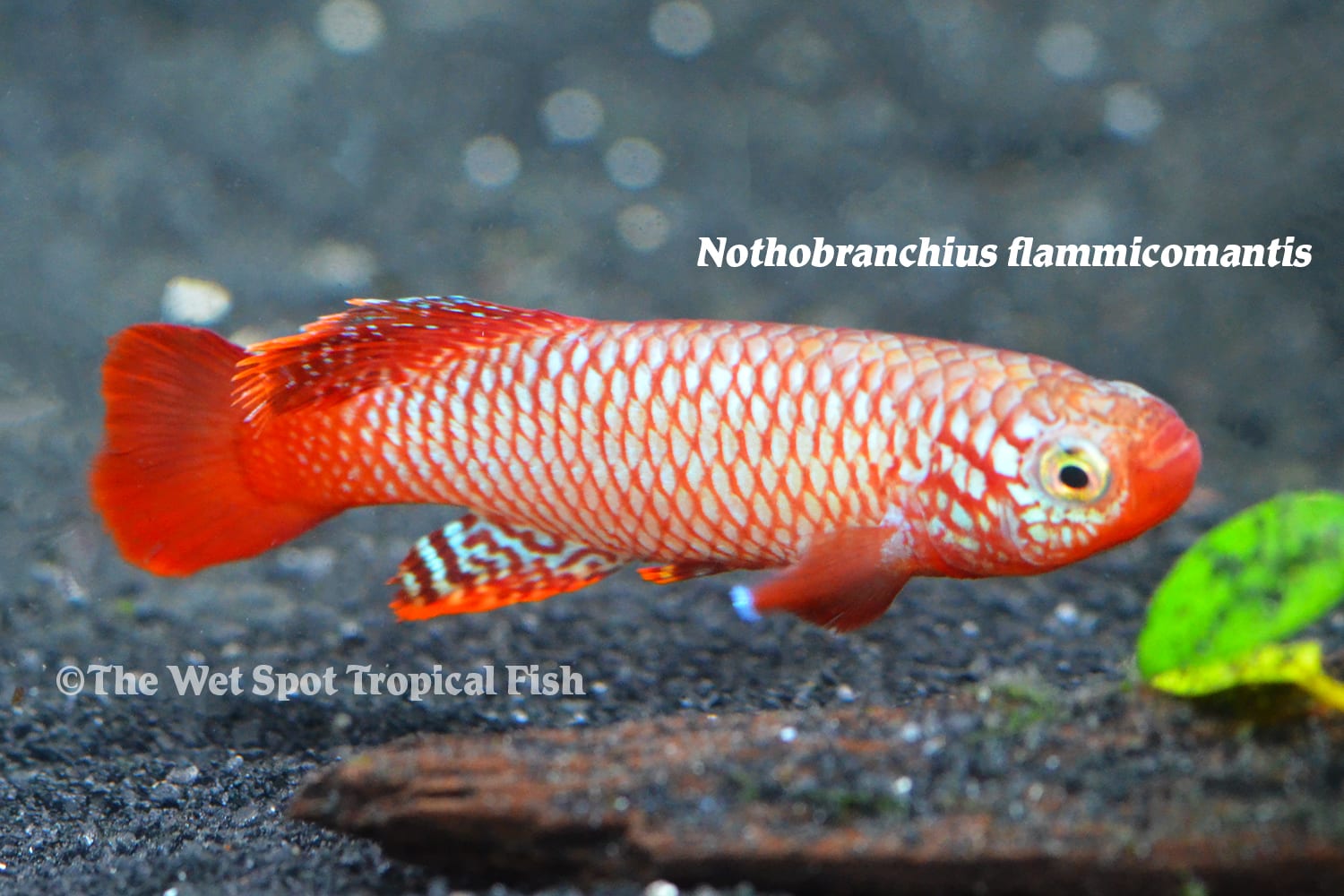Mighty Dimorphing
Mighty Dimorphing
We’ve all heard the phrase “Men are from Mars, Women are from Venus”, and while there may be a lot of problems with that statement, most species in the animal kingdom are sexually dimorphic. In fact, it has been postulated that the first sexual dimorphism arose with sex itself, eggs being large and energetically costly, while sperm are small and highly motile. Parental care aside, simply the gametic input toward offspring is much more expensive for females than males. Thus, females throughout most of the animal kingdom need to be the more discerning sex when selecting mates. There are many metrics females may use to determine mate quality, but when time is of the essence, beauty and visual cues are king.
For the annual fishes in the genus Nothobranchius, mating and spawning must occur within a very short period of time. So, as you may expect, the males are known to be exquisitely beautiful. In their native region of East Africa, these “Notho Killifish” are only active during the wet season, inhabiting floodplains, swamps, and ephemeral pools, and die as these waters dry up. Gone, but not forgotten, they leave behind desiccated, fertilized eggs buried in the substrate that remain dormant for a period of 5 to 6 months. Once monsoons hit, the eggs hatch, and very soon after emerging they become sexually mature to start the cycle over. They are relatively short-lived, but spawning is quite a fun endeavor for the more seasoned aquarist. Peat moss substrate containing eggs after spawning can be removed and stored in a plastic bag for a 5-7 months in the dark at room temperature. Then, the peat moss can be submerged in about 7-8 inches of water for fry to emerge.
Popular in the aquarium trade for their beauty, this week, we’ll take a closer look at Nothobranchius rachovii, Nothobranchius flammicomantis, and Nothobranchius guentheri.
Scientific NameNothobranchius rachovii
Common NameRachovii Killi
Temperature / pH68 to 75°F / 6.0 to 7.5 pH
Native LocationSouth Africa
Preferred DietSmall invertebrates
Distributed widely from the Zambezi River to Kruger National Park in South Africa, N. rachovii inhabits just about any water-filled depression during their active season. Males are larger and significantly more colorful than females. Reaching just over 2 inches in length they have narrow, bow-shaped bodies with upturned mouths, bright red/orange base coloration with neon blue scales along their sides and bright blue and red patterned fins. These “Rachovii Killifish” are easy to keep in small aquaria with soft substrate, low lighting, tall and floating plants, and a layer of peat for spawning substrate. Males may be territorial with one another, but this species is peaceful among other similarly-sized, peaceful species. In the wild they feed primarily on invertebrates, and should be fed items like Daphnia, bloodworm, and brine. Waters should be maintained with temperatures between 68 and 75°F, pH of 6.0 to 7.5, and hardness around 54 to 179 ppm.
Scientific NameNothobranchius flammicomantis
Common NameKisaki Killi
Temperature / pH75°F / 6.5 to 7.5 pH
Native LocationTanzania
Preferred DietSmall invertebrates
Found in ephemeral pools in Tanzania, N. flammicomantis was described and collected in 1995 from several locations across the country. Males reach about 2.5 inches in length and are the most vibrant red color with shiny blue scaling and blue eyes. Known more commonly as “Kisaki Killifish” they can be maintained similarly to their Nothobranchius brethren in small community tanks with peat moss as a spawning substrate. Another invertebrate destroyer, they should be fed the same high-quality meaty diet described above. This killifish is happiest when waters are kept with temperatures around 75°F, a neutral pH, and hardness between 120 and 160 ppm.
Scientific NameNothobranchius guentheri
Common NameGuenther’s Killi
Temperature / pH71 to 77°F / 6.0 to 7.0 pH
Native LocationZanzibar
Preferred DietSmall invertebrates
Last, but certainly not least, we look to the island of Zanzibar, east of Tanzania where N. guentheri brightens up seasonal pools. Known as “Guenther’s Killifish”, males of this species reach about 2 inches and have yellow heads, red cheeks, blue and red scaling along their sides, and bright red fins. This species is quite tolerant to breeding, and is thus used as a bio-control agent for mosquitoes, as they voraciously consume their larvae. They’ll eat just about any invertebrate offering, and can be fed following the general Nothobranchiusguidelines. Tank waters are best kept with temperatures around 71 to 77°F, pH between 6.0 and 7.0, and hardness of 70 to 178 ppm.
| As we ourselves prepare to go “dormant” with the changing of the season, showing off our good looks to potential mates may be farther from our minds. We can, however, use Nothobranchius as inspiration to get our summer beach bods ready! |


